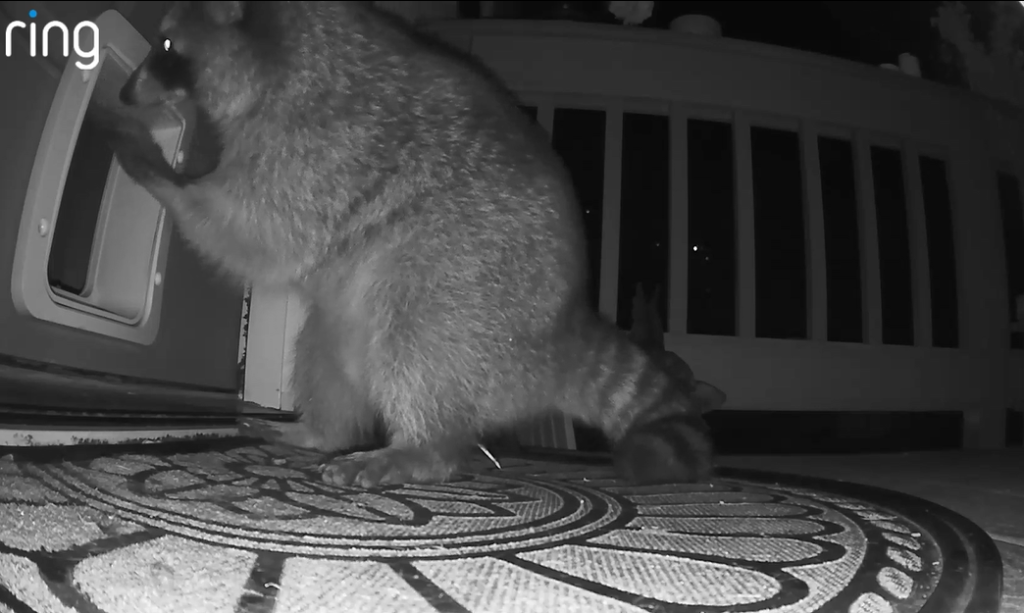One morning, a man woke up to the sound of a cat dish falling off a platform in his dining room. Upon investigating, he was shocked to find a large raccoon in his living room. The raccoon had gained access through the cat door. After reviewing the Ring camera footage, it was discovered that the raccoon had been in the house previously, staying undetected for about 10 minutes. Fortunately, there was no damage and the man’s two cats were unharmed.
The man shared the surprising encounter on social media, noting that this was the latest in a series of urban wildlife encounters caught on his backyard cameras. The man had a microchip pet door that was supposed to only allow his two cats to enter. However, the raccoons were able to pry the door open in the opposite direction, allowing them to gain entry without a microchip. The man activated the “intruder mode” on the pet door, which temporarily locks the door both ways when it detects an unauthorized attempt to enter.
While the “intruder mode” seemed to be effective in deterring the raccoons, the man expressed concerns about inadvertently preventing his own cats from accessing the house. He had enjoyed the convenience of the cat door for the past few years, allowing his cats to come and go as they pleased. He was hesitant to impose new restrictions on his cats after they had enjoyed the freedom for so long. The man considered exploring other technical solutions to prevent future wildlife invasions.
The man contemplated installing motion-sensing lights or upgrading to a cat door with two-way microchip capabilities to address the issue. He welcomed suggestions from others on potential solutions to the problem. In the meantime, he joked about sleeping in the living room to listen for any sounds of another wildlife encounter. The incident served as a reminder of the benefits and drawbacks of technological innovations, highlighting the need to balance convenience with security when it comes to pet doors and home security systems.


